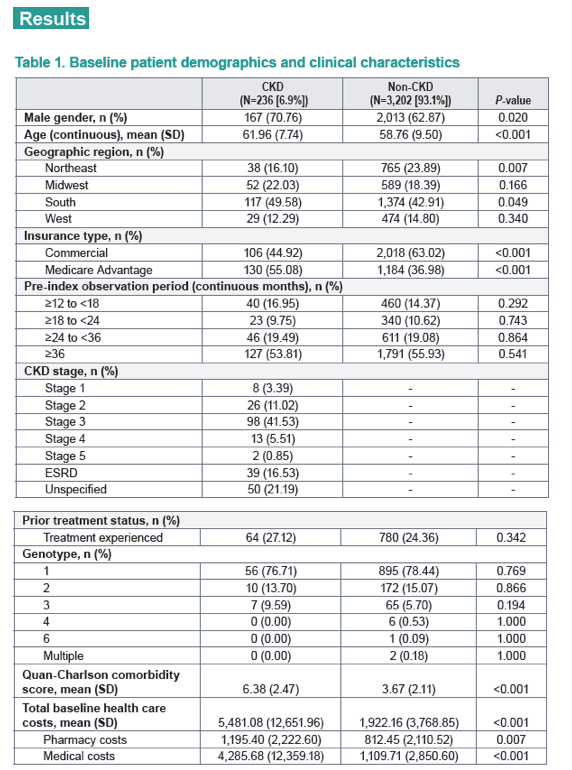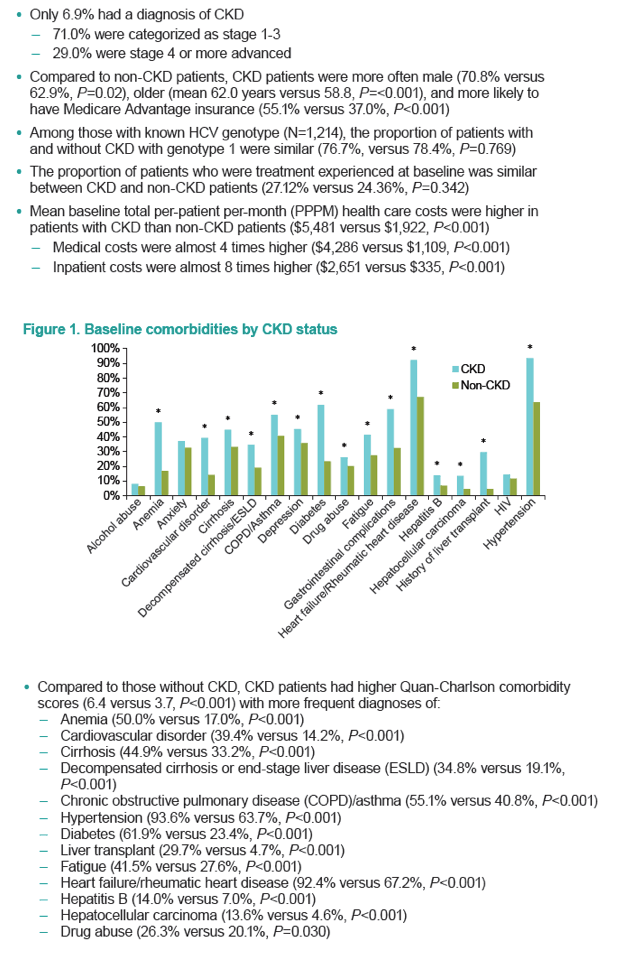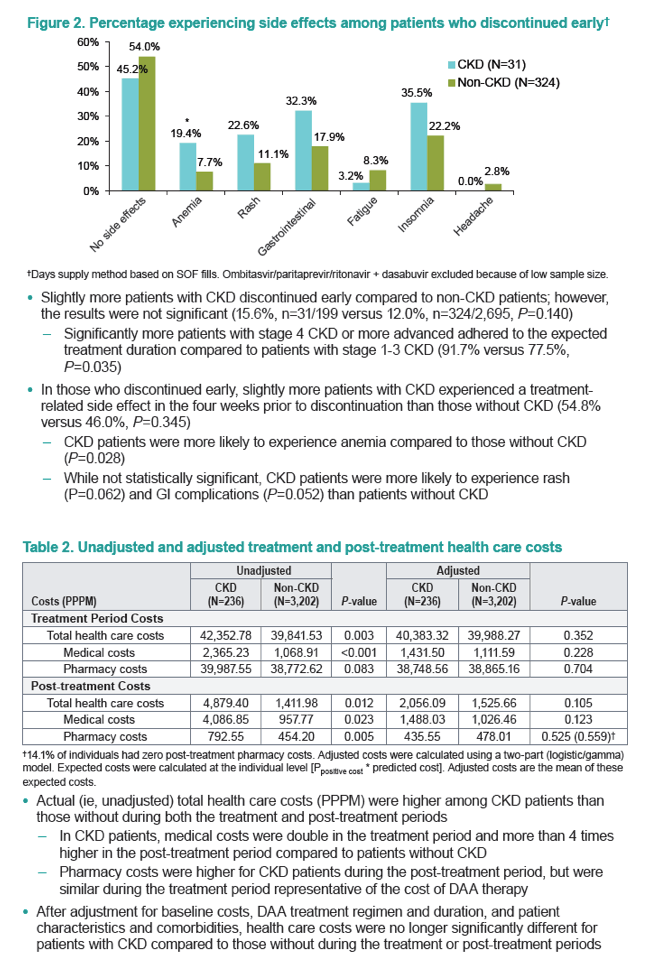 |
 |
 |
| |
CHARACTERISTICS AND PREVALENCE OF CHRONIC KIDNEY DISEASE AMONG PATIENTS WITH HEPATITIS C WHO ARE TREATED WITH INTERFERON-FREE DIRECT-ACTING ANTIVIRAL REGIMENS
|
| |
| |
Reported by Jules Levin
EASL 2016 April 14-17 Barcelona
Amy Puenpatom* 1, Michael Hull2, Jeff McPheeters2, Kay Schwebke2
1Merck & Co. Inc., Kenilworth, NJ, 2OPTUM, Eden Prairie, MN, United States

Program abstract
Background and Aims: Hepatitis C infection (HCV) is a leading cause of chronic liver disease worldwide. Comorbidities such as chronic kidney disease (CKD) may cause significant burden for these patients. With the introduction of direct acting antivirals (DAAs) for the treatment of HCV, it is important to understand characteristics, comorbidities and treatment profiles of HCV infected patients with CKD.
Methods: Patients with HCV and treated with all oral DAAs who were continuously enrolled in large US health plans in 11/2013-6/2015 were identified. Patients had continuous enrollment with medical and pharmacy coverage for at least twelve months pre-treatment and through DAA therapy completion. Patients using interferon during the treatment period were excluded. HCV treatment, CKD and other comorbidities were identified with diagnosis and procedure codes in medical claims. The prevalence of CKD among these HCV patients was estimated, and comorbidities were compared between patients with and without evidence of CKD.
Results: The study included 3438 HCV infected patients treated with DAAs, of which only 236 (6.9%) had CKD. 14.4% of patients were diagnosed with CKD stages 1-2, 41.5% stages 3, 6.3% stage 4-5, 16.5% end stage renal disease (ESRD), and 21.2% unspecified. Patients with CKD were more often male (70.8 vs. 62.9%, p=0.02) and older (mean age 62.0 vs. 58.8, p<0.001). Slightly fewer patients with CKD were considered treatment naïve (72.9% vs. 75.6%, p=ns). Among a subset with known genotype (n=1212), proportions of genotype 1 were similar (76.7 vs. 78.4%, p=ns). A higher proportion of patients with CKD than without CKD had cirrhosis or ESRD (66.5% vs 50.4%, p<0.001). Differences in comorbidities between patients with and without CKD included hypertension (93.6% vs. 63.7%, p<0.001), diabetes (61.9% vs. 23.4%, p<0.001), liver transplant (29.7% vs. 4.7%, p<0.001), history of drug abuse (26.3% vs. 20.1%, p<0.001), and depression (45.3% vs. 36.0%, p<0.01). Patients with CKD had a higher Quan-Charlson comorbidity score (6.4 vs. 3.7%, p<0.001).
Conclusions: From November 2013 through June 2015, a relatively low number of patients with HCV and CKD are being treated with all oral DAAs. Compared to HCV-infected patients without CKD, these patients had higher rates of cirrhosis and other comorbidities including hypertension, diabetes, liver transplant, and drug abuse. The findings suggest a potential need for more renal-friendly HCV therapies.





|
| |
|
 |
 |
|
|